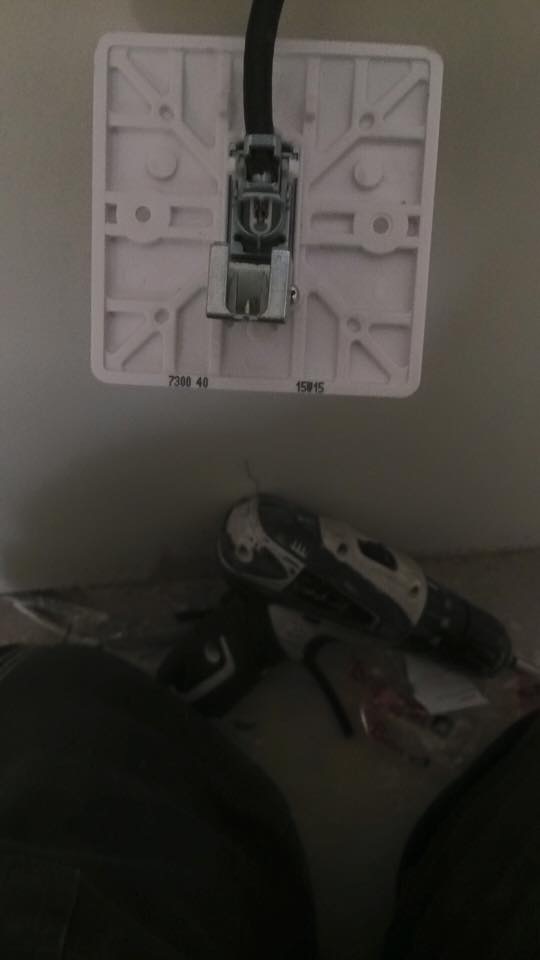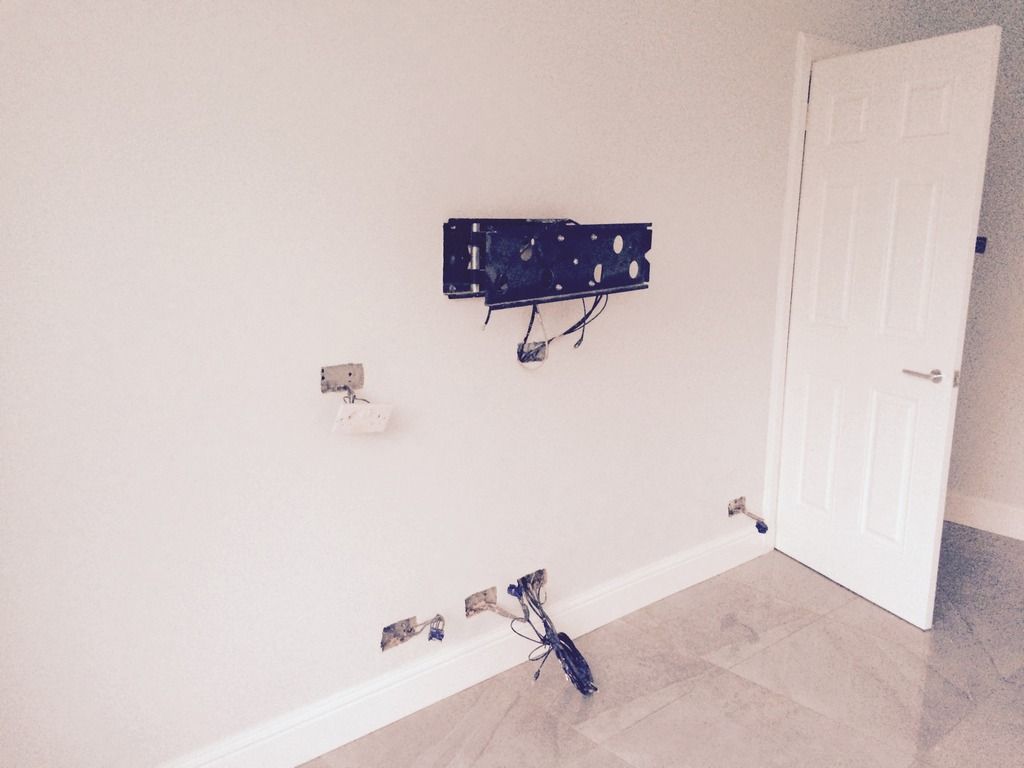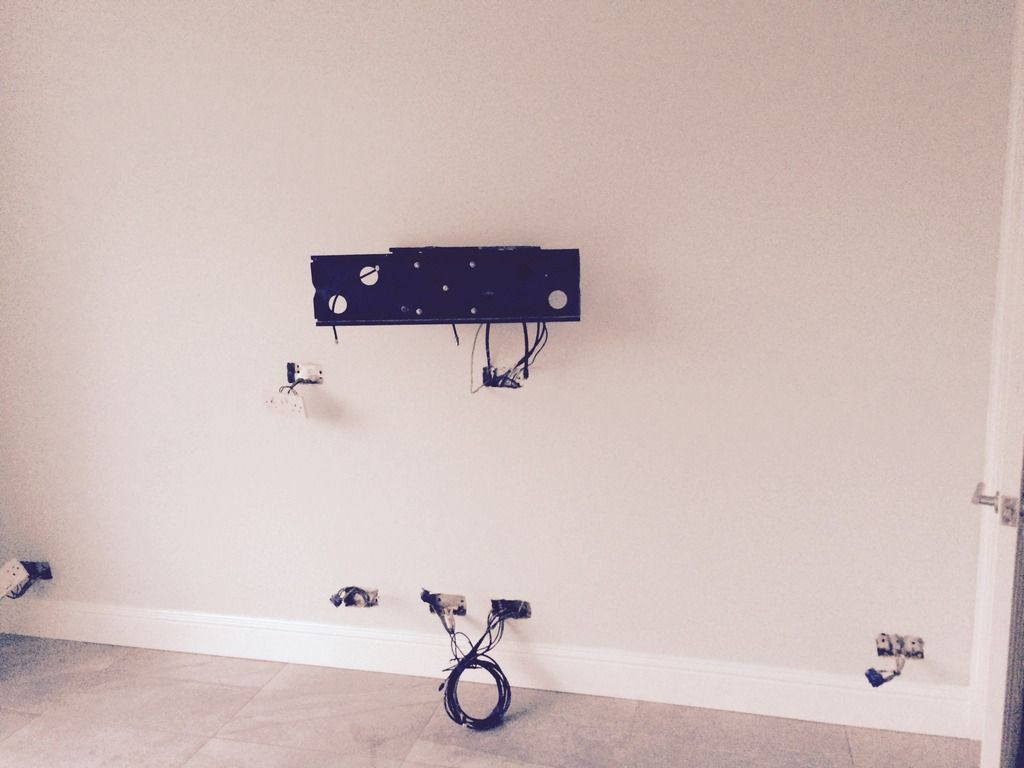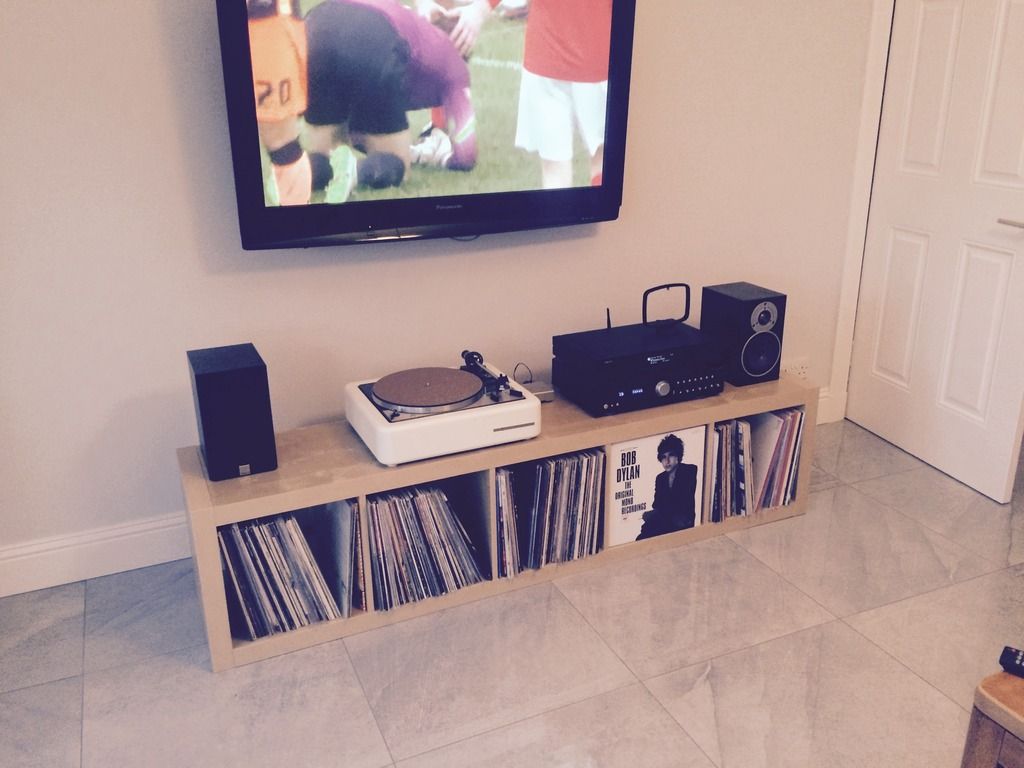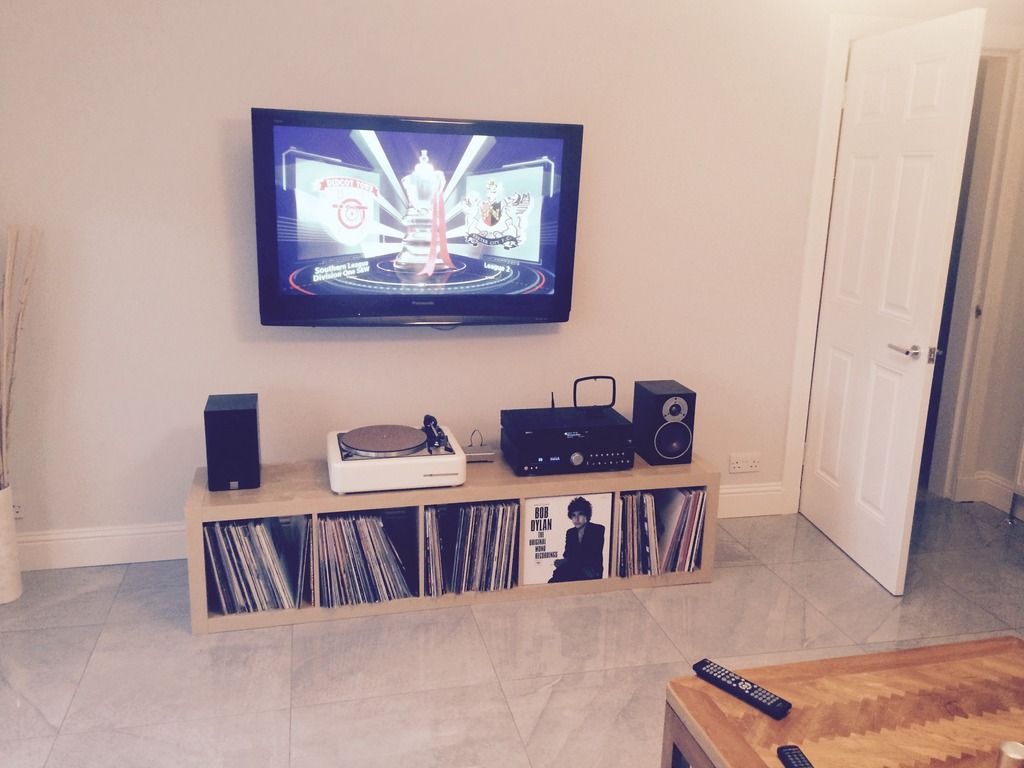Hi, guys just looking for some pointers and the easiest way of going about this.
Apologies in advance for the length of this post but my head is hurting with this lot
I've currently got a 46" plasma (approx seven years old) up on the wall which had a Humax Freesat box hooked up via an HDMI cable between them, the free stat box has two LNBs from the satellite dish on the side of the house and we also had a bluray player hooked up to the plasma then from the TV I've the analogue audio outs going to a hi-fi amp so that the amp controls all of the output from the Hi-Fi and the TV.
So far so simple however I'm going to move the position of the TV and the Hi-Fi, which has a FM tuner (I have a proper FM aerial BTW), an AM tuner and an internet tuner plus there is also a network player which I use to stream iTunes from my laptop, to the opposite side of the room approx 4mts away but there's good access under the floor and some of the cables going to the TV at it's current position are passing the new TV position under the floor (sat cables and cat five cable).
The TV is going to be going up on the wall at approx 1200mm to the bottom of the TV and the Hi-Fi is going to be going into a low level unit (approx 450mm high) below the TV in the same position.
So I would like to minimise the amount of cables that I am going to need now so the options are buy a new smart TV but install a wired Lan cable rather than rely on wireless and maybe do away with the satellite dish/cables/humax box cause we can only use these in the winter (leaves and trees) or keep the plasma for the minute and again do away with the satellite cables but install a Lan cable for future proofing for a new smart TV install for sometime in the near future.
I really don't see us using the Humax box or the bluray player again cause we now mainly watch normal TV (no SKY) and use BBC iPlayer for programmes that we've missed or watch movies on Amazon prime or Net-flicks or occasionally iTunes and right now all of that content is accessed via my laptop connected to the TV via a HDMI cable.
So under/behind the TV I'm going to install a 13amp socket for power to the TV, an aerial socket for the Freeview Tuner in the TV and maybe two satellite output sockets for the Freesat tuner in the plasma. and of course the Lan outlet as the plasma does have a network connection but I think it's only for upgrading the firmware in the TV and isn't used for streaming.
I also need to connect the TV's analogue audio outs to the amplifier via cables but are there some sort of sockets available that could be installed at the TV position and another one at the amplifier position with obviously the cables buried in the wall between the two?
Then for the Hi-Fi at low level I'm going to install two double 13amp sockets, an FM outlet for the FM tuner and a Lan outlet for the network player.
The router is in an other room a bit away but access under the floor to this room is easy too.
I would like to have a nice neat solution especially the TV position, at the moment the room is being pulled apart so running cables to the TV position is easy enough so if someone could perhaps suggest an elegant solution for the TV maybe a single socket doing everything and how to install it then that would be really helpful and something similar for the low level Hi-Fi position too although I could just pop the cables up from under the floor and connect to the components and hide the cables for them in the Hi-Fi unit but I would much prefer to have an elegant solution for the Hi-Fi too.
Thanks for reading and BTW I'm happy for anyone in the Glasgow area who wants to price this work to get in touch by PM.
Tony
Apologies in advance for the length of this post but my head is hurting with this lot
I've currently got a 46" plasma (approx seven years old) up on the wall which had a Humax Freesat box hooked up via an HDMI cable between them, the free stat box has two LNBs from the satellite dish on the side of the house and we also had a bluray player hooked up to the plasma then from the TV I've the analogue audio outs going to a hi-fi amp so that the amp controls all of the output from the Hi-Fi and the TV.
So far so simple however I'm going to move the position of the TV and the Hi-Fi, which has a FM tuner (I have a proper FM aerial BTW), an AM tuner and an internet tuner plus there is also a network player which I use to stream iTunes from my laptop, to the opposite side of the room approx 4mts away but there's good access under the floor and some of the cables going to the TV at it's current position are passing the new TV position under the floor (sat cables and cat five cable).
The TV is going to be going up on the wall at approx 1200mm to the bottom of the TV and the Hi-Fi is going to be going into a low level unit (approx 450mm high) below the TV in the same position.
So I would like to minimise the amount of cables that I am going to need now so the options are buy a new smart TV but install a wired Lan cable rather than rely on wireless and maybe do away with the satellite dish/cables/humax box cause we can only use these in the winter (leaves and trees) or keep the plasma for the minute and again do away with the satellite cables but install a Lan cable for future proofing for a new smart TV install for sometime in the near future.
I really don't see us using the Humax box or the bluray player again cause we now mainly watch normal TV (no SKY) and use BBC iPlayer for programmes that we've missed or watch movies on Amazon prime or Net-flicks or occasionally iTunes and right now all of that content is accessed via my laptop connected to the TV via a HDMI cable.
So under/behind the TV I'm going to install a 13amp socket for power to the TV, an aerial socket for the Freeview Tuner in the TV and maybe two satellite output sockets for the Freesat tuner in the plasma. and of course the Lan outlet as the plasma does have a network connection but I think it's only for upgrading the firmware in the TV and isn't used for streaming.
I also need to connect the TV's analogue audio outs to the amplifier via cables but are there some sort of sockets available that could be installed at the TV position and another one at the amplifier position with obviously the cables buried in the wall between the two?
Then for the Hi-Fi at low level I'm going to install two double 13amp sockets, an FM outlet for the FM tuner and a Lan outlet for the network player.
The router is in an other room a bit away but access under the floor to this room is easy too.
I would like to have a nice neat solution especially the TV position, at the moment the room is being pulled apart so running cables to the TV position is easy enough so if someone could perhaps suggest an elegant solution for the TV maybe a single socket doing everything and how to install it then that would be really helpful and something similar for the low level Hi-Fi position too although I could just pop the cables up from under the floor and connect to the components and hide the cables for them in the Hi-Fi unit but I would much prefer to have an elegant solution for the Hi-Fi too.
Thanks for reading and BTW I'm happy for anyone in the Glasgow area who wants to price this work to get in touch by PM.
Tony
Last edited:


